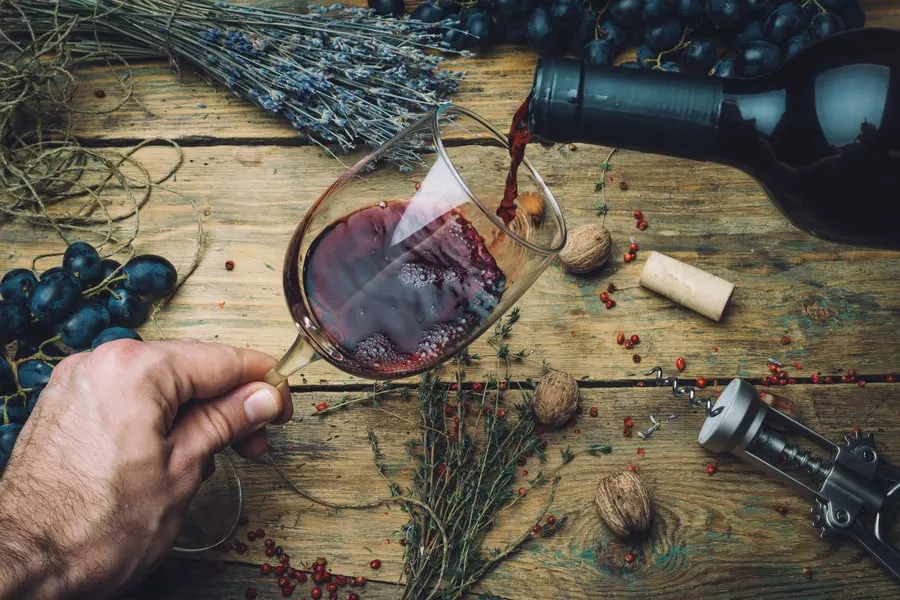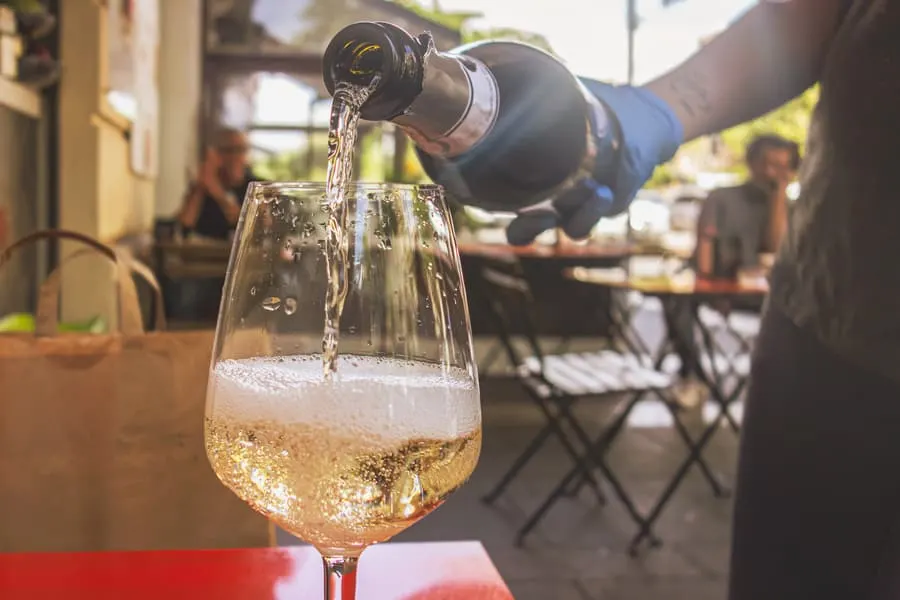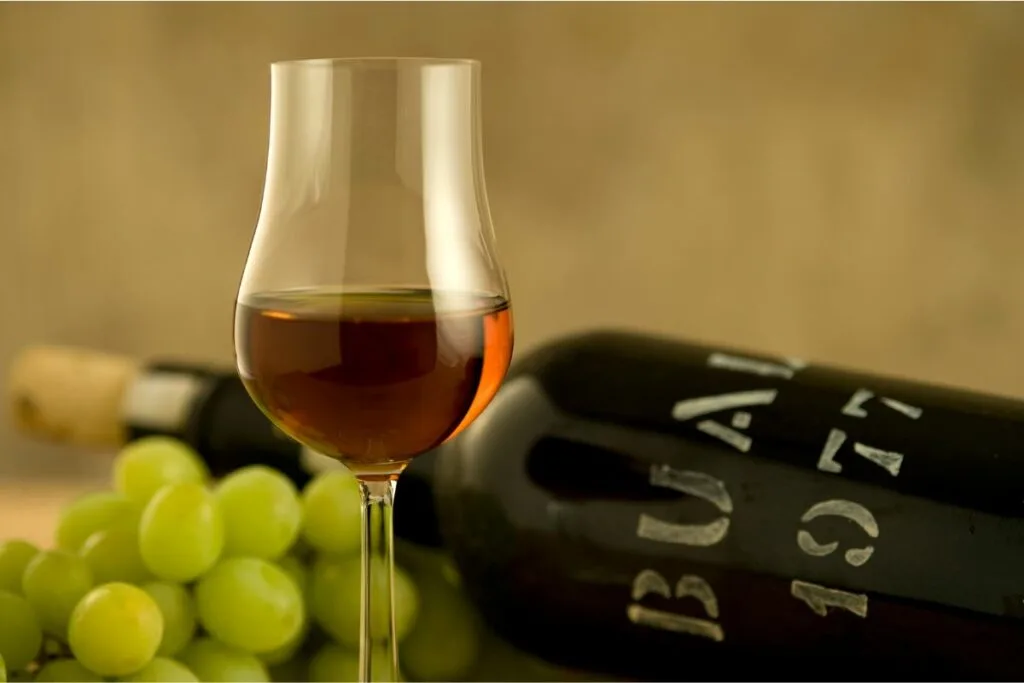As an Amazon Associate, I earn from qualifying purchases with no additional costs for you.
Cleanskin wines are a category of wine with a ton of misconceptions among a lot of new and experienced wine drinkers. Many folks assume these wines are of a low quality which is reflected by their reduced cost. So are they any good and worth buying?
Many cleanskin wines are of excellent quality and a great value for wine lovers. A cleanskin wine is a wine from a commercial or family-owned winery sold under any label other than the parent label. These wines are typically greatly reduced in price.
In this article, we will really break down this somewhat obscure topic in the wine industry and show you why maybe you should consider these wines for your collection. It really can be a rewarding buy if you locate the right wines.

TIP: If you want to check out the best refrigerator for wine storage, I recommend trying out the Avation (18 bottles) compressor refrigerator with Wi-fi smart app control cooling system. You can find this refrigerator by clicking here (Amazon link).
Quality of Cleanskin Wines
A cleanskin wine simply means a bottle of wine from a commercial winery that, for many reasons, decides not to sell it under its parent label. You can expect to save a lot of money on these wines, and sometimes they can be a good value.
Recommendation box: Everything you need to enjoy your wine as much as possible. All recommended products are personally tested and regularly used by experts from this website (Amazon links):
> Ivation Wine Cooler – Energy-efficient wine cooler for 18 bottles with Wi-fi smart app control cooling system.
> Wine Rack – Beautiful, elegant wood rack for up to 7 bottles and the choice of vertical or horizontal storage.
> Durand Wine Opener – Classic vintage wine opener (we like all these classic staff).
> YouYah Iceberg Wine Decanter – The most beautiful and handy wine decanter we personally use.
> Bormioli Rocco Wine Glasses – A set of eight elegant and traditional wine glasses made in Italy.
> Vintorio Wine Aerator – Simple but really useful wine aerator for a reasonable price.
> The Original Vacu Vin Wine Saver – The best wine saver on the market in a package with two vacuum stoppers and two wine servers.
And if you want to become a true connoisseur of wine, we recommend reading the book Wine Folly: The Essential Guide to Wine (Amazon link), where you will find all the information you need about winemaking, wine varieties, flavors, and much more.
The word cleanskin comes from the Australian term for unbranded cattle. Cleanskin wine was introduced to Australia in the early 2000s as a way for the wine industry to manage a large oversupply of wine, and a drop in prices.
As a result, wine consumption in Australia greatly increased. The price of cleanskins dropped to around or below the price of bottled beer and sometimes even bottled water. Cleanskin wines, however, are getting the attention of wine buyers across the world.
Some of the wines have very plain labels in order to show the grape varietal and the year of bottling, as well as any information required by local laws such as alcohol content, and standard additives, and volume.
However, more and more cleanskin wines are giving you specific key information like provenance or a particular region that you know produces great wine.
Cleanskin wines have typically been sold at deeply discounted prices in full dozen cases for home consumption. However, some cafés and bars have begun selling them as entry-level house wines.
Some reasons for cleanskin wines are an oversupply of grapes and intense competition within the industry. Thus the producers try to find innovative ways to turn the juice into profit.
The bottles may have been a canceled export order, from a specific country that now has a label that was for that intended country, and can now be given a basic label to be sold as a cleanskin.
In these cases, the wine will be of reasonable or better quality. Another example is if a winery had trouble selling a certain line, they may package it as cleanskin. They may also do this if they need to clear the warehouse or empty their wine tanks before the next harvest.
TIP: I wrote this great article on how to store wine with a cork that you will certainly learn from. To learn how to store wine without a cork, then this article will be your resource.
Things to be careful of with Cleanskin Wines
A few companies may use cleanskin as a way to clear out a blend that did not turn out as the winemaker expected, or can be the ends of several tanks or barrels that did not make the intended label.
There could’ve also been a slight mistake during bottling – (too much exposure to oxygen or the level of sulfur is off).
TIP: Do you know the difference between expensive and cheap wines? Find out in this guide. Can you age cheap wine and does it make sense to do so? Read this article for the answer and more.
The only way you can know if this is a problem is to try the cleanskin wine first before purchasing. Some of these wines are so cheap that oftentimes a retailer is happy to open a bottle and pour a free sample.
TIP: A suitable wine glass is the basis for enjoying well-being while drinking your favorite wine variety. Here are our favorite ones (Amazon link):
- Bormioli Rocco Crystal Wine Glasses: A set of eight elegant and traditional wine glasses made in Italy for a reasonable price.
- Riedel VINUM Wine Glasses: Luxury set of two wine glasses suitable for any occasion. We just love them!
- Schott Zwiesel Tritan Crystal Glasses: If you like unusual alternatives, a set of six stemless glasses made of crystal glass.
On the occasion that you are not able to sample the wine, asking a few questions can help you find out who made the wine. Sometimes it will be a brand you know and trust.
Are Cleanskin Wines looked down upon?

Some wine drinkers will look down on cleanskin wines because they don’t fully understand what they are. Many cleanskin wines are actually of excellent quality but for a variety of potential reasons, they are sold for a lower price under an alternate label.
Some may come to the conclusion that wine aficionados would not be open to buying cleanskin wines. This is not at all the case.
Sometimes cleanskin wine wholesale companies will sell their wines with complete transparency in the wines’ provenance, quality, and characteristics of the unlabeled wines they offer.
(A wholesaler is a company that goes between the winery and the retail consumer). This instills confidence in the buyer and allows them to know all the fine details, such as the name of the winery, vintage, varietal, additives, and region. (Some wines even have short descriptions and food pairing suggestions).
Companies such as these only work with reputable award-winning wineries that practice high standards of viticulture (wine-producing) and use high-quality fruit.
For example, in Australia, you can buy cleanskin wines from the prestigious regions of Barossa Valley, Coonawarra, Adelaide Hills, McLaren Vale, and Clare Valley.
These are usually only available in smaller quantities so if you fall in love with any of the wines, you can go directly to the wineries’ online site and buy direct (at higher prices).
Many times these suppliers of cleanskin wines will only work with small family-owned wineries. This way you can experience their knowledge, style, and expertise in a cleanskin wine (just without the label).
Why Cleanskins from Small Family-Owned Wineries are a Great Value?
Wineries often have unlabeled wine in their warehouse. Sometimes the winery didn’t label because it was for their use only, private tastings or cellar door use, for example. Maybe a logistical error occurred at the time of bottling/labeling that made the label turn out to be not quite perfect.
There may have been a mismatch between the numbers of labels needed at bottling time. More bottles were filled than expected, or the labels were printed incorrectly.
And as mentioned above, a large international order requiring international labels to be applied later may have been canceled, leaving a large stock of unlabeled bottles.
TIP: This guide explains why the shape of a wine bottle matters and compares 7 different bottles. Do wine bottles break easily? We discover the answer here.
It is generally too expensive after the initial bottling to design and print a small run of labels, take packed cartons back to the bottler to unpack, put each bottle on the line, label, repack into another new carton, and transport back to the warehouse.
So the unlabelled stock will be categorized as a cleanskin. These logistical errors mentioned above have nothing to do with the juice inside!
Reputable wineries from all over the globe that take pride in their craft produce cleanskins. As mentioned above, you may be familiar with many of these wineries.
The Influence of a Labeled Wine & Cleanskin Wines

Wine labels can play an important role in our decision-making process, whether we realize it or not. Wine brands and especially luxury wines take labels very seriously.
A familiar winery took its label from a traditional look to a modern classic look and sales rose from 2% to 7.5% annually with the new label design.
These percentages are huge when you are looking at a winery that sells 300,000 cases in a year! For most people, looking at wine labels is subliminal. It is hard to get away from the practice of picking a wine by the label.
For those trying to get away from this strategy, something to look for is wine provenance. In order to learn something about the wine and ignore its label, the provenance is the first thing to check out. Wine is an agricultural product grown in a specific place.
Bulk wines are sourced for a variety of places and have generalized regional information. In other words, most cheap wine is made from blends that don’t just come from one winery, or even one region. But wines created from a specific place will have a specific location (or even vineyard) indicated on the label.
TIP: If you are interested in buying a wine decanter, I recommend purchasing these two top-quality decanters:
- USBOQO Wine Decanter (check it out on Amazon & read customer reviews)
- Iceberg Wine Decanter (check it out on Amazon & read customer reviews)
When looking at cleanskin wines (or looking at regular wines and trying to look past their pretty label)checking to see where the wine was sourced and that it was sourced from a more specific location is a good way to improve your chances of getting a higher quality wine.
So if the retailer can give you a region (or provenance), knowing (or looking up) what that region is celebrated for will help give you a guide as to whether you’re getting something of value.
Label terms such as Reserve & Special have no official meaning in the U.S.
Some countries have strict rules but in the United States, reserve wine means basically nothing. These are label tricks where words like special and fine don’t always mean what you think.
The term reserve originally came from the cellar where wines were reserved or held back from a particularly productive and good-tasting vintage.
TIP: Read this guide to discover the differences between French and Californian wines. This article explains what makes a fine wine fine! Read on to discover 9 good reasons!
Today there is an implication that a reserve wine is of higher quality and has been aged longer. For the most part, you will see reputable wineries use the term when putting forth their best product.
Unfortunately, however, there are a few producers who take advantage of the concept as a way to better market their wine. This may give you more confidence in buying cleanskin wine.
Knowing that you should check out the wine’s region and that you are not to fully rely on labels anyway is a plus for cleanskin wine. There are countries where reserve wines do have rules.
They are:
- Spain: Reserva wine must be aged for three years with a minimum of six months of that time in oak barrels. You’ll see this mostly for tempranillo wine from Rioja, Toro, Ribera Del Duero, and Valdepenas.
- Italy: Riserva wine will be aged a minimum of two years to be classified this way. On the higher end of the spectrum, Amarone is aged four years and Barolo must be aged for five years before leaving the cellar.
- Austria has a “reserve” minimum requirement which is a minimum alcohol content of 13% ABV (alcohol by volume).
TIP: If you live in an apartment or have limited storage space, this helpful article on the 7 Wine Storage Hacks for Small Spaces will really help you out. This was one that was recently published on my site and very well-researched.
In Conclusion
Hopefully, one will be encouraged to drink cleanskin wine that is from a provenance (a particular region that you know produces great wine) instead of looking at the color, style, and design of a clever marketer’s wine label.
Find great-tasting wines regardless of good marketing! Cleanskin wines are a great place to start! This way, there are no preconceived notions – just great wine! No X tastes this way because it is labeled as Y.
Finding great-tasting wines regardless of good marketing as well as the sheer value of these wines, are great reasons to drink cleanskin wines.
TIP: Check out this page for a complete list of wine products and accessories I love. You’ll find my recommendations for wine refrigerators, decanters, and aerators and the best place to buy wine online. Click here to see the complete listing.
Sources:
https://winefolly.com/tips/are-we-overly-influenced-by-wine-labels/
